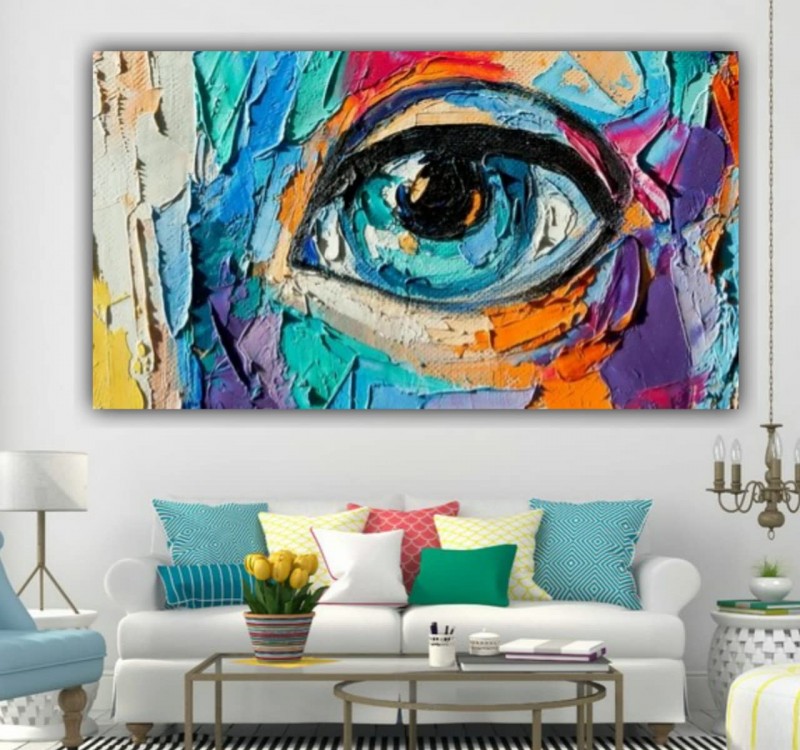
Are you ready to unleash your creativity and add a personal touch to your living space? Designing and painting canvas wall art is an exciting and rewarding experience that allows you to express yourself artistically. Whether you're a seasoned artist or a beginner, this article will guide you through the entire process of creating a captivating canvas wall art piece. From conceptualization to the final brushstroke, we'll cover everything you need to know to craft a masterpiece that reflects your unique style and vision.
How to Design and Paint a Canvas Wall Art
Designing and painting a canvas wall art involves several stages, each of which plays a crucial role in bringing your imagination to life. Let's dive into each step in detail:
1. Brainstorming Ideas for Your Artwork
The first step to creating a remarkable canvas wall art is brainstorming ideas. Start by asking yourself what emotions, themes, or elements you want to convey through your art. Consider the ambiance of the room where the artwork will be displayed. Look for inspiration in nature, personal experiences, or even art movements that resonate with you. Write down your thoughts and sketch rough outlines to visualize your concept.
2. Exploring LSI Keywords for Art Themes
To enhance your creative process, explore Latent Semantic Indexing (LSI) keywords related to your chosen art themes. LSI keywords are semantically connected words or phrases that help search engines understand the context of your content better. For instance, if your canvas wall art revolves around "seascape," related LSI keywords could include "ocean," "beach," "waves," "marine life," etc. Integrating these LSI keywords in your content can boost its visibility on search engines.
3. Selecting the Right Materials
Before you start painting, ensure you have the right materials at hand. Choose high-quality canvas that complements your artwork's size and style. Opt for acrylic or oil paints, depending on your preference and expertise. Invest in a variety of brushes to achieve different textures and effects. Don't forget to get a palette for mixing colors and a set of easels to support your canvas while painting.
4. Preparing the Canvas
To ensure a smooth painting experience, you must prepare your canvas adequately. Start by priming the canvas with gesso to create a suitable surface for paint adhesion. Allow the gesso to dry completely before proceeding to the next step.
5. Sketching Your Artwork
Once the canvas is ready, lightly sketch your design using a pencil. This preliminary sketch will serve as a guide while you paint and prevent major errors. Take your time during this phase to achieve the desired composition and proportions.
6. Choosing the Color Palette
The color palette you choose plays a vital role in setting the mood and tone of your artwork. Experiment with different color combinations and consult color theory to evoke specific emotions. Don't hesitate to mix and match colors to achieve the perfect blend that complements your overall theme.
7. Implementing the Underpainting Technique
The underpainting technique involves creating an initial layer of paint to establish the composition and values of your artwork. It serves as the foundation on which you'll add more layers of paint later. Use a monochromatic palette to create the underpainting, focusing on light and shadow.
8. Building Layers and Textures
With the underpainting in place, start building layers and textures. Layering allows you to add depth and dimension to your canvas wall art. Experiment with various brush strokes and painting techniques to achieve unique textures and effects.
9. Adding Details and Highlights
As you progress, pay attention to finer details that enhance the overall appeal of your artwork. Add highlights to create contrast and make certain elements stand out. Use smaller brushes to add intricate details that capture the viewer's attention.
10. Balancing the Composition
Step back and evaluate your artwork from a distance to ensure a balanced composition. Adjust any elements that may appear too overpowering or lacking in harmony. Achieving a well-balanced composition will make your canvas wall art visually appealing.
11. Drying and Varnishing
Once you're satisfied with your masterpiece, allow it to dry completely. Depending on the type of paint you used, this could take a few days. Afterward, apply a varnish to protect your artwork from dust and environmental factors, ensuring its longevity.
12. Framing and Displaying Your Canvas Art
Choose a suitable frame that complements your canvas wall art and the decor of the room where it will be displayed. Ensure the frame enhances the overall presentation without overshadowing your artwork. Finally, hang your canvas wall art in a well-lit area where it can be appreciated by all who enter the space. Designing and painting canvas wall art is a captivating journey of self-expression and creativity. Through brainstorming, selecting materials, sketching, and adding intricate details, you can transform a blank canvas into a captivating masterpiece. Embrace the artistic process, experiment fearlessly, and let your imagination flow freely. Whether you're an aspiring artist or a seasoned painter, remember that art is a personal journey, and every stroke on the canvas tells a unique story.
Entering the Metaverse: A Glimpse into the Future of Digital Interaction
Climate Change and Environmental Sustainability: A Comprehensive Guide to a Greener Future